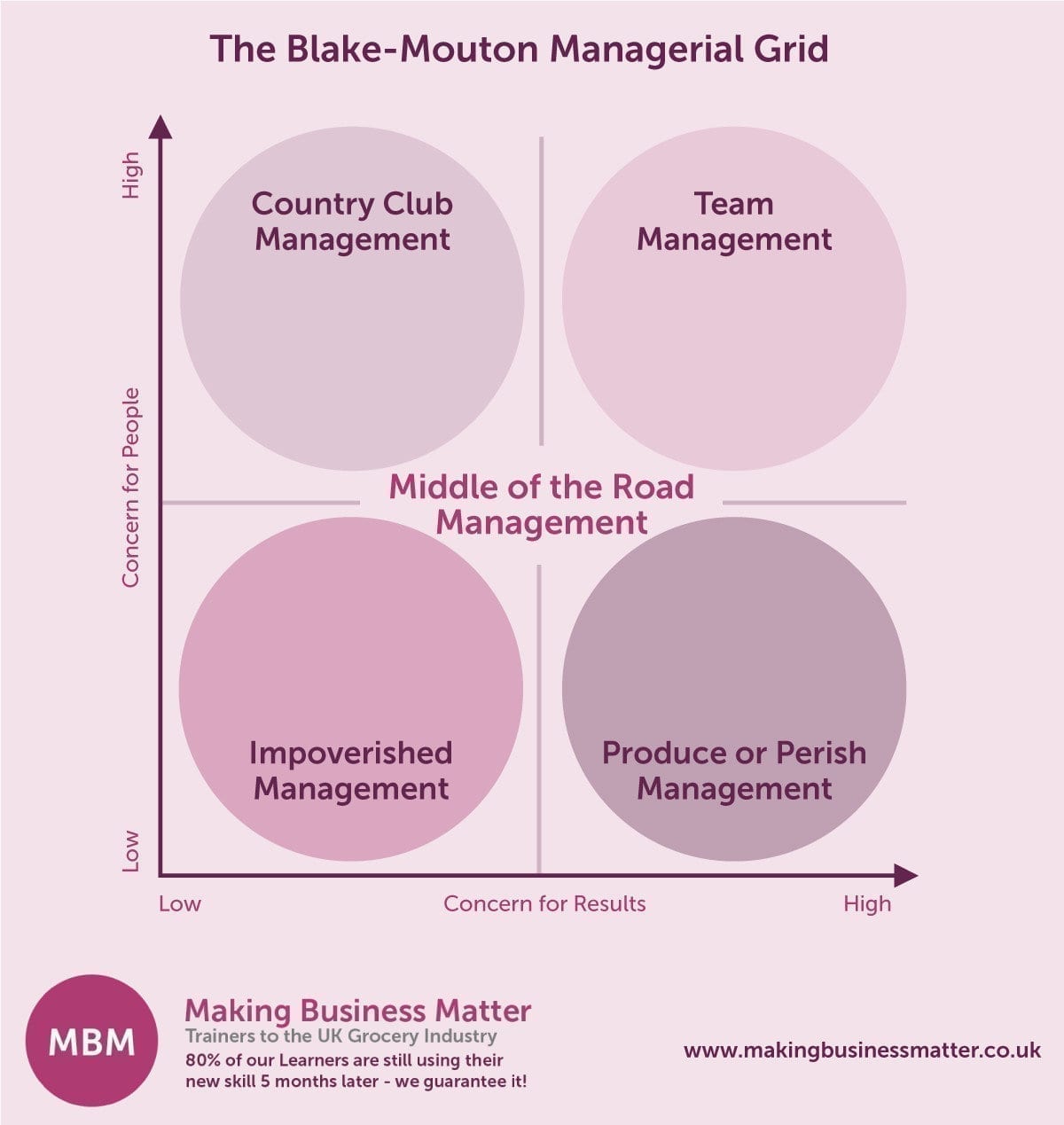Appreciating Leadership Styles
Interest and writing on leadership skills, and in particular styles of leadership, over the last 50 years has been prolific. Academic research is increasing as we constantly seek the holy grail of leadership. Consultants and learning providers run to catch up with the very latest theory and look to turn it into practice for future managers and leaders. A Google search would provide a good idea of pages and search terms on the internet. It would, however, be difficult to provide an accurate picture of every piece of literature on leadership.
Confused? It’s not surprising; there is much to go at and no doubt much more to come.
This article considers some of the more common questions on leadership. It looks to unpick some of the theories that made it through to everyday discussion, and indeed, use.
A View of Behaviour
Take a step back and consider ‘what are behaviour styles?’ Behaviours are actions we perform that, according to relation theory, play out our inner motivation and self-worth. When we work with individuals or team and we are self-aware, we can spot behavioural patterns in others. A behavioural style is the constant pattern of behaviour which allows people looking in to ‘see how you are’. You can link these to personality styles.
For example, you may have noticed that a team member has the same ritual each morning. They come in, switch their computer on, take off their coat, and hang it in the same place and so on. Even their conversation has a pattern. From this, we could deduce that this behavioural style lends itself to preferring process, reliable and predictable. Then there is the opposite, an individual who you never know what kind of conversation might appear.

Reflection on Behaviour
Reflecting on behaviour increases and improves our self-awareness. We ‘wake-up’ to how we are acting and more than this, how we are perceived. Many times as a consultant the question came ‘how can I improve my behaviour skills’. The starting point is a very simple question, how aware are you of what you do? This is also the beginning of understanding leadership and leadership styles. If I monitor my behaviour, become aware of it, I can also see the impact.
What do people do when you say something or act in a certain way? Do people listen more and move towards you or do they move away from you? Consider the two most popular personality types, introversion and extroversion, what do they mean to you? Which would you be most attracted to and most likely to engage with? Now reflect on how adaptable you are with these two behavioural styles.
Leadership Styles Understood
At a conference, a famous sports manager was asked ‘what is leadership to you’? The answer was two-fold. He stated that leaders must have followers and leaders must know their people inside and out. He went on to qualify this by explaining that the leadership style he adopts differs from the situation and the audience. When he first took over, some would argue that the style was autocratic, setting the direction and policy and the way they were going to be.
The reason for this was that he took over a poor performing team that needed a different direction and vision. This fits with one of the most popular leadership theories called ‘situational leadership’. Popularised by Spencer Johnson and Ken Blanchard through their book ‘The One Minute Manager’, this really was the leading edge in leadership theory.
This was not the first time that leadership had been significantly researched to produce a working theory. In the sixties, if you were to show leadership capability, you would likely be sent on a Mouton and Blake leadership course. This took the manager through a range of questions to ultimately place you on a ‘grid’:

Your answer determined your score against two-axis, concern for people and concern for results. The panacea was the ‘9.9’ manager. This is to say you have a high concern for both points on the axis. This was termed the ‘Team Manager’, high in trust of others and interdependence. At the other end of the scale, the ‘1.1’ leader is the impoverished leader or ‘laissez-faire’. Little input in terms of direction and care for their people. The main criticism with this approach was the singular style that the Mouton Blake grid placed you in.
One Size Doesn’t Fit All
As interest in leadership grew, so did the articles and, more importantly, research. The previously mentioned situational leadership was a huge leap forward in terms of the need for agility in leadership styles. People regularly ask coaches, consultants, academics and leadership ‘expert’s’, ‘what is the best leadership style?’. The answer is not as simple as pointing you to, as some would have you believe, a single approach.
Google ‘leadership styles’ and it will return an array of answers. These will tell you there are 9, 7 or 3 main leadership styles, the fact is, there are many more. In the changing world, pinning down a single approach we can adopt is not realistic yet we push harder for that perfect solution. What we can look for is the human approach which adapts and is agile to the situation.
Servant, Transactional, Situational…
Consider an employee who is beginning their career in management. They have worked hard to become skilled in their area of expertise; they are a good citizen, helpful, knowledgeable, open to new ideas and agile in their approach; and they want to move forward, become a leader of people while performing for the organisation at the highest level.
Here we have an example of someone with capability, their skill and capacity to take in more. Their mindset is one of learning, to be able to observe and make rational decisions about right and wrong. We have the future right here in this individual, but in some minds, they lack something, possibly leadership. So as a diligent forward-thinking organisation we send them onto a leadership training Here comes the tricky part, which course, accredited or not?

How does an organisation recognise which style works for them and indeed fits into the culture? The questions need to be reflected back to consider what culture you operate and cultivate? While the styles generally well researched, a servant leadership approach may not be right in a culture of situational leadership. The fear is not that the styles will clash it is the view that this approach may be unusual.
If one observes leadership as an indicator, either of performance or culture, it may need to fit, or possibly change, holistically. For example, if leaders observe transactional leadership, they hold a view of hierarchy, of reward through performance. This would is generally accepted that this is now out of date, a carrot and stick approach if you will. More than this, as with all singular styles, this is very much ‘route one’ leadership. How do we apply agility in these situations?
Leadership Agility
Agility, a popular word at the moment usually linked with projects. This word easily attaches to leadership, and this should be very much the approach. Let’s continue to consider the new manager and their development. There is an opportunity here for the new manager to reflect on how they would want to be treated by a leader. In the beginning, when everything is a new challenge, it is appropriate to direct.
This is not the macho nonsense we see on TV shows. This is an approach that sets very clear performance outlines, almost like being back on your first day of work. The new manager is not ready to be coached at this stage due to not understanding the perimeters of the role. Maybe in 3 months, they will be, this approach is very much of the ‘Situational Leadership’ style.
There are four main styles here. Directional, Coaching, Facilitative and Delegating. Each is appropriate and fits with the individual and their stage of capability and within the organisation. This is an approach that makes real sense, yet also requires strong self-awareness from the leader. These are outlined in Johnson and Blanchard’s book ‘The One Minute Manager’ mentioned earlier.
While over ten years old, this approach is still rolled out and utilised as it reflects the need of the team member. There are of course, as with any leadership theory, criticisms. How can new leaders adopt these quickly? This is not a difficult model to appreciate. It can be understood through practice and learning from mistakes and successes. One of the main points is, even if there is a genuine attempt at the styles, this is appreciated by the team and individuals.
Substance Over (Leadership) Style
Adopting a style doesn’t necessarily mean deployment is effective. If we took a democratic style on words alone, the outputs could look awkward especially in an urgent situation. Emergent styles are appearing, as they always have done, all the time. More current styles like ‘Servant Leadership’ could be misinterpreted to literally serving the team. This is probably one of the most misunderstood yet lauded styles currently. It is the term ‘servant’ that people like. It throws up images of service and subordination.
In reality, ‘Servant Leadership’ means a sharing of power. Putting the needs of the employees first and putting people first. There are critics and that is always a healthy approach, we should be critical and think deeply about leadership. In essence, this style is for the good of the people, a question is are we just swinging on the leadership pendulum?

Culture
Culture plays a huge part. How we choose to model ourselves as leaders in lots of ways shape the culture we work in. Through conversations, many leaders state that there are so many styles it is easy to get lost in trying to adopt and therefore cause more confusion. What is heartening is the onset of Authentic Leadership.
Authentic leaders openly state their vulnerabilities, who engage with others within teams and groups for their skills and views. These are people who value deeply a code of ethics and have a strong moral compass for right and wrong. They also engage with people beyond their background and aid others in their sense of self. This is truly substance over style. People can sense when this is genuinely applied and there is a genuine attempt at authenticity. The keyword here is consistency; a practised method that is open yet keeps the people and the organisation at the forefront.
Final Thoughts
There will be research on leadership far into the future. Interest in it will remain relentless and a total solution will probably never occur. Development in leadership will continue as organisations look to grow great people. Leaders affect culture, culture affects people, and people drive organisations.
Getting leadership right is more than an economic issue, although getting it wrong will significantly affect productivity and growth.
As organisations begin to appreciate human effects such as inclusion, there is a real opportunity to develop great leaders. These will be from diverse backgrounds, have strong moral and ethical approaches that live their own values and respect that of others. This kind of leadership, when authentically applied is powerful and has the potential to create great people.
When this occurs, substance wins out every time.
Action: For even more useful content on leadership, check out our ultimate guide on Leadership Skills.




